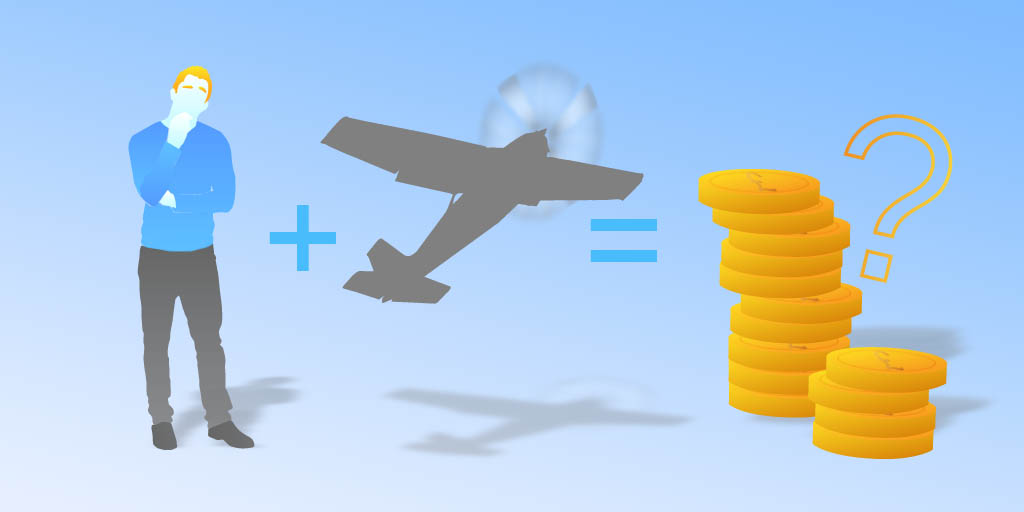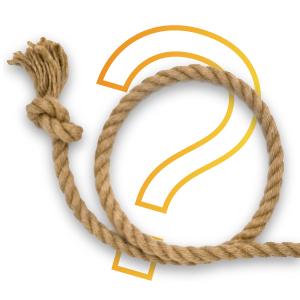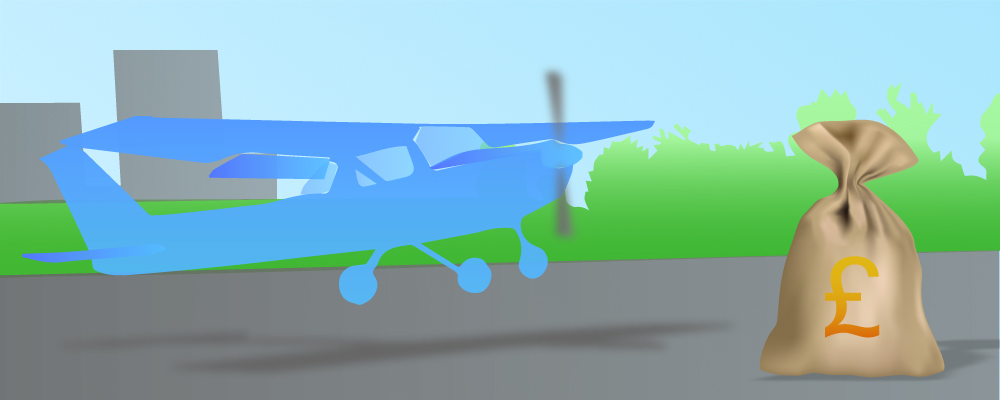
As a flying instructor, two questions I’m often asked when giving a trial lesson in a plane are, ‘How long does it take get a Private Pilots Licence?’ and ‘How much does it cost?’
 The first question is a bit like asking the length of the proverbial piece of string: it’s different every time. The second question however is easier to answer. I’d say that, depending on many factors, it is possible – just about – that you could do it for £10,000. In this article, I’ll talk you through how I’ve arrived at this figure, giving you some pointers on the different factors that can make a big difference to the cost of your flying lessons.
The first question is a bit like asking the length of the proverbial piece of string: it’s different every time. The second question however is easier to answer. I’d say that, depending on many factors, it is possible – just about – that you could do it for £10,000. In this article, I’ll talk you through how I’ve arrived at this figure, giving you some pointers on the different factors that can make a big difference to the cost of your flying lessons.
Firstly, a little about the Private Pilots Licence (PPL) course. The course requires a minimum of 45 hours flight training. This means that even if you’re the greatest pilot in the world and feel that you’re destined to be the next Maverick, (a pilot from cheesy 80’s classic ‘Top Gun’ for those of more tender years), you still have to complete 45 hours of training before being eligible for the practical flight exam. Some flight schools offer package deals, but in this article we’ll look at ‘pay as you go rates’ – simply paying for the training as and when you do it. In my experience this is the option most people choose.
Check out Plane Flying Lessons from just £55!
Let’s Talk Cold, Hard Cash
So, to begin our journey to that figure of £10,000, we need to start with the basics: cost per hour of training. I took a sample of price lists from 20 flying schools the length and breadth of the UK and arrived at some average figures.
For one hour of flight training with an instructor (known as dual training):
- 2-Seater £160
- 4-Seater £180
Since we know that the minimum flight time needed to qualify is 45 hours, this would work out at:
- 2-Seater £7200
- 4-Seater £8100
• Note: these are average prices only – costs vary considerably from school to school, so shopping around is very much advised!
You might well wonder why anyone would train in a 4-seater when you could save nearly £1000 in the 2-seat option. However, which aircraft you train in has a lot to do with how tall, dark and handsome you are (and whether you enjoy a pie or two). Most schools have a weight limit for 2-seater planes of around 14 stone and a height limit of around 6 feet 2 inches. In General Aviation (the world of light aircraft) size matters, and plays a large part in which aircraft you fly!
The Nitty Gritty
So, we’ve covered the costs of dual training in a plane. You might think we’re home and dry. Think again. There are some other important costs we still need to budget for:
- The Medical: To fly recreationally you will need a class 2 medical, which costs around £200.. The medical is nothing to be feared and most reasonably healthy people should have no problems. It’s a good idea to get your medical early on though – it’d be very disappointing to find out after shelling out thousands that you can’t fly legally!
- Membership Fees: Most schools require you to become a member before you can fly. Fees might set you back £150 on average.
- Radio Telephony Licence: You need to have this before taking your PPL test. The cost varies but on average it would be about £200.
- Study materials: You will need to purchase several study books for the PPL ground exams, as well as maps and a few other bits of navigational equipment. These can be bought separately as and when you need them, but some companies offer a package with everything you’ll need for around £250 (they even come in a very natty pilot’s bag!).
- The 9 Written Exams: Yes, just like with driving, there’s a theory test… or 9! At an average of £30 per exam, we get £270.
- Test Fee: This is the fee that you pay to the examiner on the day of your PPL practical test – usually about £200.
- Aircraft Hire for Test : The test lasts at least 2 hours so that’s £320 for the 2-seater and £360 for the 4-seater on average.
- Pilots Licence Issue Fee: Even when you’ve finally passed your test you can’t fly alone until you’ve had your shiny new Private Pilots Licence issued by the Civil Aviation Authority (CAA). This currently costs £183.
Adding these expenses to the 45 hours flight time costs, our totals are now:
The High Cost of Landing
Phew! So now we’re on the home straight, getting close to the real cost of a PPL in the UK. There is just one more expense we need to look at, which can add up to a considerable amount – the landing fees. It’s safe to say this is one area where costs vary immensely at different airfields, so this is definitely something to discuss with any potential flying school.

Landing fees are charged by airfields every time an aircraft’s wheels touch the ground after a flight. They are determined by size and weight of aircraft, so at some airfields the landing fees for a 2-seater will be cheaper than for the 4-seater. There are also usually different charges for full landings and partial or ‘touch and go’ landings – each of which you will be doing plenty of during your PPL training.
During your 45 hours training you’d expect to do 45 full landings:
- 2-Seater: 45 X £14.50 = £652
- 4-Seater: 45 X £17.00 = £765
Also during your training you might expect to do 50 ‘touch and gos’.
- 2-Seater: 50 X £4.50 = £225
- 4-Seater: 50 X £5.50 = £275
So much maths! Don’t worry, we’re almost there. It’s worth noting that I’ve based these calculations on the landing fees at my home airfield, which are fairly representative of typical costs. Landing fees do vary widely though, and this is a topic I’ll cover in more depth in a future Ground School article.
The Ten-Grand Total
Time for that all important figure, the sum total of all our hard work!
For a student who manages to complete the PPL course, in a plane, in the minimum of 45 hours, using the average ‘pay as you go’ figures from 20 schools around the UK, the cost of a Private Pilots Licence would be… (fanfare, trumpets, drum rolls etc!)
So, it seems that my estimate of £10,000 isn’t too far off the mark! For a gifted student who flies often (weather allowing) and passes everything first time, the £10,000 total is achievable. Fantastic!
Well… semi-fantastic. There is a tiny bit of bad news. I’m sorry. But I promise there is good news to follow. So maybe take a seat, pour yourself something stiffening and read on.
In the UK, the average student needs at least 55 hours of training to achieve their licence. And many people don’t pass everything first time. Using the figures we have arrived at in this article you can see that an extra 10 hours of tuition doesn’t come cheap.
Top Tips for Affordable PPL Training
Don’t despair! The good news is that there are many ways to keep the costs as low as possible. Here are my top tips for affordable Private Pilots Licence training:
- Take your lessons often: Don’t get rusty in between flights!
- Study hard: Re-taking exams is expensive, so know your stuff! Also read up as much as possible about your next lesson and learn checklists off by heart.
- Choose a local airfield: Wasted journeys due to bad weather can rack up big petrol costs!
- Choose a flying school with multiple aircraft: You don’t want to be grounded for lengthy periods whilst Old Faithful is in maintenance!
The Really Good News!

I promised you some more good news and here it is. Learning to fly is one of the most exciting things you can do with your clothes on! Yes, it can be challenging and it certainly isn’t cheap – but the rewards are incredible. I can’t promise that attaining a private pilots licence will make you more attractive to your potential future spouse, but it will definitely set you apart from 99% of the population who have only ever dreamed of taking flight.
The thrill of your first solo flight is something you’ll never forget. Your first landing at another airfield, thinking to yourself, ‘I got here without being stuck in any traffic jams and in half the time it would have taken by car’, grants you an incredibly well-earned sense of satisfaction.
Flying high over the British countryside and marvelling at how ‘it actually looks quite nice from up here’ is, frankly, the dog’s unmentionables.
So go on. You know you want to.
[wa-wps-pro id=’3762′]








Thank you for the very informative article. I have been trying to get my PPL for many years but always find myself running out of money but I am determined to complete it one day despite a mortgage and kids to feed. It sounds ridiculous that it has taken so long to a mass 28 hours but I hope that soon in the future I will be able to achieve my goal. Keep the posts coming. Cheers.
I guess i am a oldie!
My name is ken and i had a moment siting on the roof of the family coal shed aged 13 throwing off my latest bostick glued together flying project.
I decided to fly. how i did this i did not think,nor was i any way worried.
I grew up in the 1960s in a very deprived area of Liverpool called Dodge city by the local police.
My family where on benefits and my younger sister was Downs sysndrome.
Held back in my local comprehensive school where i did not fit in i left with one ‘o’ level in metalwork.
Burning with the desire to get up there i read everything in the city library and worked in a multitude of low paying jobs to fund my lessons.
I used to go months between lessons but because i really wanted to fly i gained my UK PPL after the min. of 45 hrs.
I took all options including full spinning of aircraft which i think gives pilots a sound base line.
after 25 years i had to give up flying due to medical reasons but during that time i had a blast.
The one thing that i would encourage all student and instructors to do is to take an aerobatic plane up and turn it inside out!
If you want to fly, fly totally, any axis,any plane, this is the best insurance you can get.
Thanks for sharing, Ken!
A fantastic story and so encouraging to hear that with determination, anyone can get into the skies.
From a ‘Red Letter’ gift for a helicopter lesson 5 years ago I’ve always been an avid fan of getting a license. On the day I asked the ‘total cost’ to get one and it was much more then stated in your article, however your article has laid out the requirements and costs brilliantly and I am keen to find a school to get a package deal. (P.s. My first car was a Morris Marina :-). Great article Thank you
That’s great to hear Ian!
We should point out that the costs outlined above are for aeroplane flight training – you will find that the helicopter route is somewhat more expensive. This comes down to the fact that helicopters are more expensive to run in terms of fuel costs, as well as there being fewer helicopter instructors and so higher demand.
Having said all that there are some really great packages available and many aero clubs that will do their very best to support you on your journey towards that coveted pilots licence!
Best of luck!
Thank you for a wonderful in sight in the real world of learning to fly ,As a 70 yr old do you think I’ve left it to late
Hi there Brian, No you are not too old. I got my wings in 1962. I was just a working lad in Keighley Yorkshire. I think it cost approx. £ 20, an hour. However I found out that you had to fly 5 hours a year to keep flying so I had to drop it. dosh was very hard to come by. good luck .
Are you able to fly anywhere globally regardless of where you gained your license (Aussie living 13 yrs in Europe, now in the Netherlands, uncertain where to reside in the future)?
Excellent blog post. I absolutely love this site. Keep writing!
Is this rough cost still achievable in the UK with EASA etc nowadays?